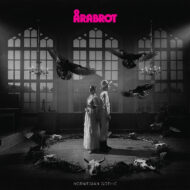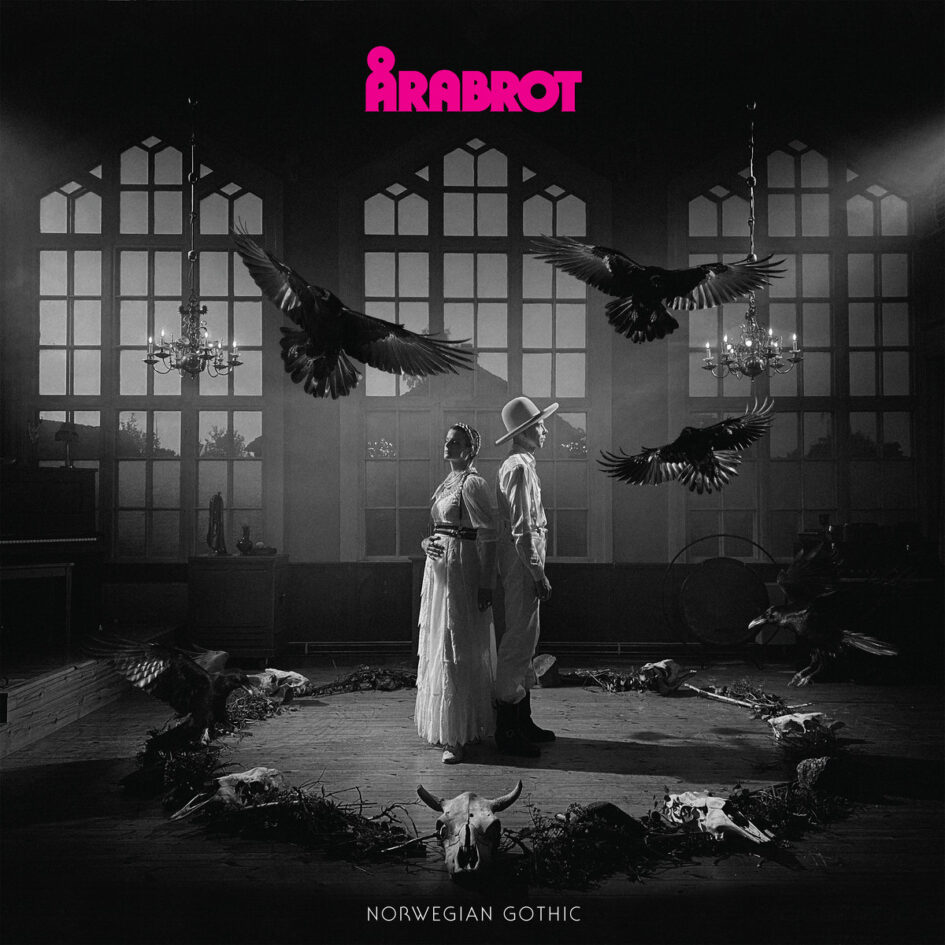 While mankind has probably been sharing frightening stories since developing coherent speech, the emergence of the gothic novel marks the modern beginnings of the horror genre. The Castle of Otranto and everything that followed gave the world the grotesque, the arabesque, the scary, the awful and the weird. From Britain, the genre conquered the world, developing all kinds of strange fruits along the way.
While mankind has probably been sharing frightening stories since developing coherent speech, the emergence of the gothic novel marks the modern beginnings of the horror genre. The Castle of Otranto and everything that followed gave the world the grotesque, the arabesque, the scary, the awful and the weird. From Britain, the genre conquered the world, developing all kinds of strange fruits along the way.
By naming their ninth full-length album Norwegian Gothic Årabrot are drawing a direct connection to gothic literature. The reference, I believe, is really rather to literature than to music. The band’s sound definitely has a dark tinge, but it is not goth rock.
Allusions to the gothic literary genre are plentiful, and not just in the song titles and the imagery accompanying the album. Living with their two children in an abandoned church in the Swedish countryside, dressing – for band photos – to look like members of a religious cult, “Dark Diva” Karin Park and “Tall Man” Kjetil Nernes could effortlessly pass as the infamous personae at the centre of a gothic novel. The classic plot usually involves an old house hiding a terrible secret in which its frightening inhabitants are involved in some kind of way.
While Årabrot’s performance has a strong theatrical element, it’s certainly not all pretend play. The exploration of death, dying and what lies beyond has, naturally, real-world roots. Kjetil Nernes was diagnosed with malignant throat cancer in 2014. He has since recovered.
The music employed to convey Årabrot’s gothic tales might best be classified as noise rock. It is not the exhausting kind of noise rock, but rather a collection of well-composed songs, with an appealing portion of melody, containing memorable riffs, and led by Kjetil Nernes’ eccentric, slightly shrieky vocals. Of course, that’s not all, or Årabrot wouldn’t be Årabrot. The compositions usually have a jazzy, punky, carnivalesque or trashy edge. And varying collaborating artists help to make every new album sound different from its predecessor. The list of collaborators for Norwegian Gothic includes names like Jo Quail, Tomas Järmyr (Motorpsycho) and Anders Møller (Turbonegro, Ulver).
Trashy and edgy is also a good description for the video the band produced for the track Kinks Of The Heart. After a spoken introduction on the dangers of rock music, we see them driving around the countryside, dressed according to the abstruse clothing rules of some religious cult, collecting an interesting congregation.
The constant flow of noise rock is interrupted by Hallucinational, a song heavy with melancholia, written and performed by Karin Park, and three tracks with distorted speech commenting on various aspects of life as an artist. The Voice thematizes finding your vocation, while Impact Heavily Onto the Concrete deals with the possibility of the musical career ending for one reason or other. On You’re Not That Special, the album’s final track, somebody gives his opinion about art in general and musicians in particular. The opinion is summarized in the track’s title and is repeated multiple times in the closing part of the track. Curiously, You’re Not That Special follows The Moon is Dead, the album’s longest, most experimental and, one could say, most artistic track.
What’s the intention of, the motivation for that curious ending? A case of self-doubt? Probably not. Rather, it is a case of self-reflection – which is somewhat surprising and unexpected. It’s not something rock musicians are exactly known for.
On Norwegian Gothic, at least, there seems to be no lack of soul-searching. I think Lester Bangs, also known as America’s greatest rock critic, who couldn’t stand artists who considered themselves special and was fired from Rolling Stone for “disrespecting musicians”, would have approved.
(8.5/10 Slavica)

Leave a Reply